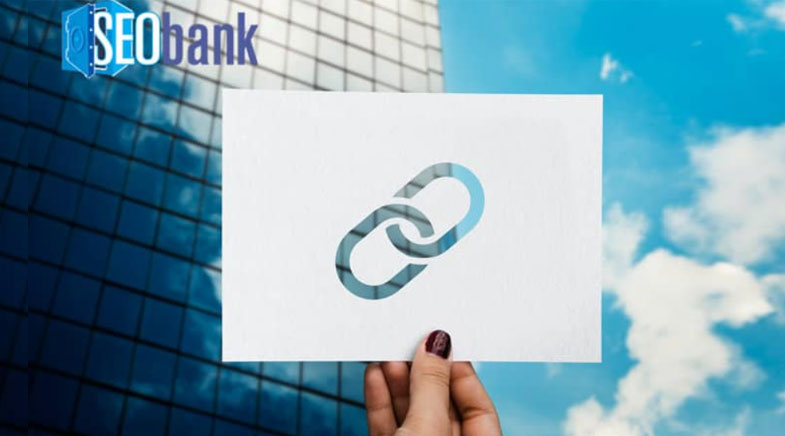You already know that backlinks are crucial for the success of your SEO efforts. But do you know that internal links are equally important? If not, you are not alone.
Most SEOs and website owners focus more on backlinks and ignore internal links. This is a huge mistake that can hurt your SEO efforts. As a reputable SEO agency, we have learned a lot about developing a winning SEO strategy to get the best results. And we can say without a shred of doubt that internal linking is a powerful lever that can bring excellent results when used strategically. This post looks at everything you need to know about internal linking and SEO.
Understanding Internal Links
An internal link is a link that points from one page to another on your site. Users and search engines use links to find content on your website. More specifically, both users and search engines use links to navigate your site to find the content they are searching for.
Internal links are similar to backlinks—and you know that backlinks play a critical role in SEO. Typically, internal links help create a hierarchy of all your website pages. The pages you link to most are viewed as a higher priority, and Google’s algorithms will give them more link equity.
Internal Links Vs. External Links Vs. Backlinks
Internal links and backlinks are both types of hyperlinks—they come with an anchor text, href attribute, and rel attribute (in some cases). However, each provides value in unique ways.
As you have seen earlier, internal linking involves creating a link from one page to another page on your site. Internal links will not boost your website’s authority but funnel the existing authority from your backlinks to your entire website.
On the other hand, backlinks are hyperlinks between two pages on different websites. Backlinks provide an excellent way to boost your website authority and improve rankings on the search engine results page (SERP). You can think of them as votes for your website.
Lastly, external links are hyperlinks from your website to a different domain. These are ideal when citing a source or linking to more in-depth content regarding a topic you are covering.
What Does Google Say About Internal Links?
Google’s John Mueller has confirmed that internal links are crucial for SEO. Mueller confirmed this during one of the office hour sessions when a participant asked whether enabling breadcrumbs is enough for internal linking.
According to John, internal linking is ‘supercritical for SEO’ and is among the critical elements that users and Googlebot use to understand how important a page is within a website. He stated that internal links offer an excellent way to mark the essential pages within a website to ensure users and Google are guided in the right direction.
According to John, web admins need to adopt a strategic internal linking strategy—you need to use appropriate anchor text when creating internal links to make it possible for users and Google to understand the context.
Why Internal Links are Important for SEO
Google uses links to understand website content and decide where to rank this content in search results. Google views a page with lots of links (both internal and external links) as a high-value article. That said, here are the reasons why internal links are essential for SEO:
Help Search Engines Understand Your Site Structure
One of the benefits of internal linking is that it allows Google and other search engines to find and index pages on your website.
Internal links provide an excellent opportunity for Google to discover content on your site. Besides, internal linking helps users and Google understand the contextual relationship between two pages.
When you create an internal link from page A to page B, you send signals that those are related. This way, users and search engines will know that the content from the two pages is connected and can make a connection.
Easy Navigation
As users go through your content, they will have more questions. You need to anticipate these questions and guide their thought process.
Internal link building will enable you to deliver a good user experience when moving your potential customers into your conversion funnel. You can then add internal links strategically to encourage them to take action.
Providing your users with a premium user experience means they will stay longer on your site instead of going back to Google for answers. This helps build brand trust, awareness, and loyalty and ultimately boosts sales.
Pass Your Page’s Authority
As we mentioned earlier, internal linking helps Google identify which pages of your site are more important. With the right internal linking strategy, internal links can pass link juice and ultimately improve rankings.
PageRank (PR) algorithm assesses and determines the quality and importance of individual pages on your website (while considering internal linking) and applying a value to it.
Although Google removed the PageRank Toolbar in 2016, it is still part of the ranking algorithm, meaning you need to understand how it works to create an effective internal linking strategy. For example, a page with authoritative external links will have a higher PageRank score. You can pass this authority to another page via internal links.
The catch is to identify these authoritative pages and take advantage of the authority on your site to improve rankings.
Internal Links Give Context
Google needs context to understand your web pages and search queries. URLs, H1tags, page titles, subheadings, and other on-page elements give search engines context about a page.
Internal links, too, provide search engines with context. This does not just involve the anchor text that you link to. The paragraph, subheading, and the link’s context within the sentence will also help search engines and users understand more about the link.
Internal Links Help Search Engines Crawl Your Site
Google uses links to discover new content. Google and other search engines could take longer to find a URL if it does not contain any internal links or backlinks.
Web crawlers and Googlebot travel from one link to another. If a new page has more links, the easier Google will find it. Pages on your site without any links are known as orphaned. Always ensure that the crucial pages on your site contain at least one link.
Types of Internal Links
Links are classified depending on their purpose and characteristics. Internal links are classified into two main categories: Navigational and Contextual links.
Navigational Links
These internal links make up the main navigational structure of a website. Typically, navigational links are site-wide links that help users find what they want in a website. They come in the form of text or picture icons and with proper HTML formatting. The primary purpose of navigational links is to build effective navigation to boost conversions.
Contextual Links
A contextual link refers to a clickable text within the written content of your webpage. When done right, contextual linking can become a strong SEO strategy for your site. Besides, contextual linking helps build credibility and popularity among users and search engines.
In other words, contextual links point to related articles and topics to ensure your pages are better linked internally and users stay longer on your site. This will ultimately reduce bounce rate and improve user engagement.
Other types of internal links worth mentioning include:
Bookmarks
These internal links refer to a specific section of a particular page or anchors. Bookmarks make navigation around bulky pages and switching between the content and referred section easier. They are implemented with the help of link in your HTML.
Breadcrumbs
You may not need breadcrumbs if your site architecture is pretty simple. However, you will need them if you run an eCommerce site with several product pages.
If you are not aware, breadcrumbs are a simple navigational feature at the top of a page that illustrates your website hierarchy. Their main purpose is to improve user experience (UX) as it allows users to go back to any point in the content hierarchy. They also help search engines understand how your content is organized and the crucial sections of your site.
Additionally, breadcrumbs pass along valuable backlink juice. The best part is that you can automate them once you create them on your website to avoid repetitive work.
CTAs and Sidebar Links
Sidebar links are a type of navigational links—think about a list of categories or related content and CTA modules that are more commercially focused, meaning they have little PageRank.
You can use sidebar links to improve user experience and crawlability. To achieve this, create a sidebar module and link to similar content. For instance, you can choose top pages within the same category or select URLs manually from a topic cluster. You may also decide to link to deep pages that do not naturally match your body content.
Nofollow Links
Typically, some links on your website are not important for SEO. For instance, a login page for your clients on your homepage doesn’t need to rank higher in search results and does not need link value.
A nofollow tag tells Google not to follow a less valuable link to prevent losing link value. While this worked in the past, the case is now different as Google has since changed how it views nofollow links.
The link value for nofollow links does not necessarily flow to other page links. The nofollow link is viewed as a link, and the value for that link is not lost. Thus, it is best to limit the number of links on a page than nofollow some of the links.
Ideally, adding a nofollow tag will not prevent Google from finding those pages. If you do not want specific pages to appear in search results, give them a noindex tag.
Footer Links
Footer links do not add any authority to your website. Footers with several links will appear spammy. The best approach? Link to your Privacy page, Contact page, and About Us page to help with navigation.
Internal Links Best Practices
Now that you know why internal linking is important for your SEO strategy, let’s look at best practices you can follow for your website.
Integrate SEO When Creating Content
You need internal pages with lots of quality content to get many internal links on your site. After all, how will you build a robust internal linking structure if you don’t have lots of content on your website?
But creating lots of content is not enough; you need to integrate SEO into your content strategy. Without keeping SEO top of mind when creating your content strategy, you won’t have ideal content for internal linking. Consider your personas, their challenges, and their path to conversion.
Understanding your customer’s pain points will go a long way in helping identify the terms they are searching in Google and their intent. Ultimately, this helps understand how you should present your content.
As a rule of thumb, create content that aligns with your customer’s pain points and anticipate their questions through their buying funnel.
Have an Easy-to-Use Website Structure
It is always a good practice to have a shallow website structure—where each content can be reached within three clicks from the homepage. Today, users care much about website speed, including the page load time and how soon it takes to complete specific actions.
If a user has to get through unnecessary links to get to their destination, they will head to another similar website with efficient internal pages. Minimize the number of clicks users need to get to important landing pages and have a simple website structure.
Use Topic Clusters
Topic clusters are crucial for your internal linking strategy. Topic clusters refer to a related bunch of content that covers broad concepts. It involves having one pillar content for each group and supporting cluster pages.
But why are topic clusters important for an effective internal linking strategy? They form a group of relevant content, with each pillar page covering an important topic with various subtopics.
These pillar pages then link to complex blog posts from appropriate subheadings from these subtopics. They form the cluster pages that link back to the main page. You can also link these cluster pages to each other and even other pillar pages where appropriate.
Topic clusters make Google view you as an authority and expert in a given topic. They also make your content organized into small subtopics, which is what Google wants.
Link to High Authority Pages
You can significantly improve your ranking by linking to high-authority pages. Here you are taking advantage of the Authority Transfer technique that allows you to distribute authority to the crucial pages.
Tools like Ahrefs, Moz, etc., can help you find high authority pages to link to. You don’t need to use algorithms or sculpt PageRank—adding internal links to relevant pages with many quality backlinks will do just fine. This is one of the best ways to transfer authority to such SEO-driven pages.
Use Keywords in the Anchor Text
Another tactic you can use to improve keyword rankings is using keywords in the link’s anchor text. For starters, internal links have many similarities with backlinks, and using relevant terms in their anchors can help improve topical relevance.
You probably have heard SEOs claim that using the exact match keywords could get you penalized in the post-Penguin world. However, there’s no evidence that a website got penalized because of anchors on its internal links. In my opinion, anchor text should describe the linked content. Of course, you can have multiple internal links with the exact keywords, but do not overdo it.
Make Your Links Contextual
Your primary focus when creating an internal linking strategy is to provide a premium user experience—the other benefits are secondary. According to the new experience update, Google aims to provide users with a better user experience and will prioritize websites that do so.
When adding internal links to specific content, ensure that the linked pages match the context of that content. This will be beneficial to you and your target users. Your target users find what they want to read, and you will experience a boost in rankings as you will have enough internal linking on your site.
Mix Up Your Anchor Text
Anchor texts are crucial for your rankings as this is what Google uses to understand your links. Now that anchor texts matter a lot, use them to your advantage.
When you create content, you want it to rank not just for the primary head term but also for other hundreds or thousands of long-tail keywords that could boost your traffic.
One way to take advantage of these terms is to use them in your internal links. Don’t just use the same match anchor text in multiple internal links. Instead, mix it up by using broad variations that deliver the context of your target keyword.
Use relevant Links
The primary purpose of internal linking is to provide a good user experience and boost your website ranking. It is paramount to ensure that the internal link you create relates to the content of the webpage you are linking from.
For instance, if you have a cannabis online store and have a web page talking about cannabis benefits. In this case, it is appropriate to link to a product page selling cannabis products but not a page selling over-the-counter drugs.
Be Mindful of the Number of Links Per Page
Like external links, too many internal links on a page means less link juice for each link. Besides, scrolling down an endless list of resources can be boring to your users and lead to a bad user experience. Worse, search engines can view excessive links as spammy, negatively impacting your page’s authority.
Ensure you don’t have excess outgoing links to get the most from internal linking. Depending on the article’s length, 2-5 links would be ideal. As a rule of thumb, spread the links evenly throughout the article instead of clustering them close.
Add Alt Attributes to Your Image Links
Alt attributes of image links are another ranking signal that can help increase your website authority. To keep with the content theme of internal linking for images, use anchor text instead of linking images. Use alt tags that are properly written when linking to images to describe each picture correctly.
Focus More on Relevancy Over Location
A common belief is that links found high on the page, above the fold, or generally in the first paragraph are more valuable. This is not always true as it goes against Google’s stand on relevance and good user experience. Inserting links high up on the page (without considering relevancy and user experience) will lead to usability and trust issues.
The best way around this is to consider your users when adding internal links and external links. Ideally, link to the most relevant and valuable content on your page.
Don’t ignore Links from Old Content
This is another internal linking best practice. When you are just starting out building a cluster topic, there are limited opportunities to get relevant links. But when it comes to creating long-form articles, you have to link to almost every blog post on your site.
When you invest in creating more content, it pays to spend some time every week to add valuable internal links.
Link Deep
Common mistakes marketers make when building internal links is to link to their website homepage and link to the “Contact Us” page.
The truth is, you probably have many links pointing to the homepage. So, instead of creating more links towards it, you should interlink internal pages to strengthen them. On the other hand, linking to the “Contact Us” page at the end of your posts isn’t recommended either. In most cases, links to these pages are found in the homepage navigation bar, meaning there is no need to link to them. Instead, link to pages deep within the structure.
Avoid Site-wide Footer Links
While this used to be a common practice a few years ago, the case is entirely different. Some websites, especially in real estate and travel, added keyword-rich internal links in their footer section.
However, footer links were hit with an algorithmic penalty in 2013. You should avoid adding more footer links as Google may view them as spam.
How to Set Up an Internal Linking Strategy
Several things come into play when creating an effective internal linking strategy. Depending on your goals, these steps may be helpful:
Focus on Low-Volume Keywords When Creating Internal Links
You can strengthen internal pages’ authority by targeting many long-tail, low-search-volume keywords instead of only a few high-search-volume keywords. Ideally, point most contextual internal links to the bottom-level pages and interlink them properly.
Point High-Traffic Pages to Conversion Pages
This internal linking strategy will come in handy if you want to create engaging and valuable content on your blog to drive more traffic. However, since a blog cannot boast of a high conversion rate, you may want to direct users from high-traffic blog posts to landing pages optimized for conversion for better conversion.
Optimize Your Main Pages for High-Volume Keywords
This internal linking strategy will work best if your website is doing well for a few high-search-volume, high conversion keywords.
Optimize your homepage for these keywords while other pages serve an auxiliary purpose—provide users with valuable information but not rank for any keywords. Your homepage will have more internal links than category pages pointing to it in this setup.
Link High-Authority Pages to Stuck Pages
You may want to use this strategy if you have tons of great content on your blog with tons of quality backlinks. The idea is to take advantage of link juice from high-authority pages to promote pages ranking poorly in SERPs.
Use Google’s PageRank to evaluate a page’s rank power based on the number and quantity of backlinks—the more quality backlinks a page has, the more authoritative it is and vice versa. You can then point these high-authority pages to low-ranking pages to pass the backlink juice.
Point More Contextual Links to Mid-Volume Keywords
Mid-volume keywords are three-word keywords that give a more specific meaning, for instance, “CBD oil for anxiety” or “local SEO tools” (they belong to a subject category in a website). To prioritize these category pages, ensure more contextual links point to them.
Common Internal Linking Problems and How to Fix Them
Understanding the common internal linking problems and their solutions is paramount. This is what this section will cover.
Broken Internal Links
You will have broken internal links if search engine crawlers are redirected to non-existent web pages. If you are imagining 404 errors, you are right.
To fix this problem, replace or remove the broken link with a link to a live page.
Excess Internal Links on a Page
While there is no set rule on the number of links Google can crawl, too many internal links could cause usability issues. Audit pages with many unnecessary links and remove any excess links.
Orphaned Sitemap Pages
Any page not linked to any other page on your site is called an orphaned page (search engines cannot crawl nor index it).
You can fix this by including the orphaned page in your internal linking strategy (if it’s valuable). If you don’t want search engines to rank it, it would be best to remove it or add a “noindex” tag.
Links Couldn’t Be Crawled
You will get this error if a page’s URL format is incorrect or contains unnecessary characters. To fix this, find the links with this error and fix any formatting issues.
Solitary Internal Links
Pages with only one internal link present a missed opportunity for SEO and user experience. To get the most from internal linking, you need to link to other relevant content (provided it is naturally possible).
Find other relevant pages to include in your internal linking strategy to fix this problem.
HTTPS Links Leads to HTTP Pages
In some cases, links on HTTPS can point to HTTP pages leading to unnecessary redirects. The best way around this is to manually update HTTPS links that led to HTTP or hire a developer to do it for you if it is site-wide.
Wrapping Up
As you can see, internal linking need not be complicated. With a logical, hierarchical site structure to follow, creating your internal linking strategy is simple and effective. We hope the above tips will help create a solid internal linking strategy that will improve your ranking on Google. If you need someone to hold your hand, we are here for you. Get in touch below, and our SEO nerds will help you out.
About the author:
Sean Chaudhary
CEO at AlchemyLeads.com
A fast-growing consultancy specializing in search engine marketing. He’s passionate about his company’s growth, being a good father, and watching the Los Angeles Lakers





